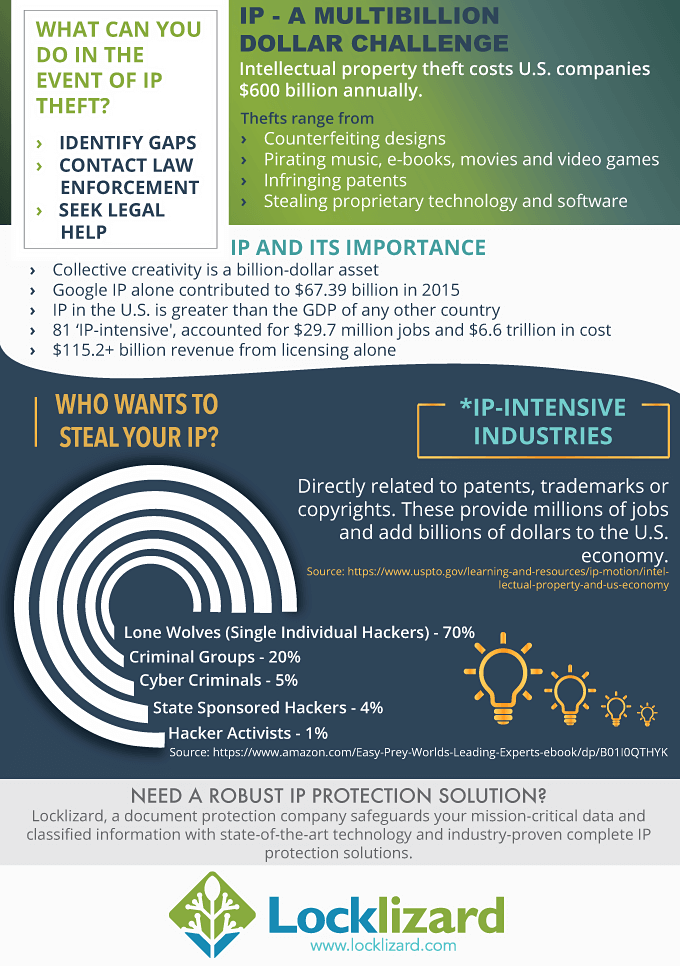
Intellectual Property (IP) Protection: DRM Protecting Copyright
Protecting your intellectual property and copyright with DRM

Introduction to copyright protection
Perhaps the most valuable thing anyone ever has or creates is the product of their mind. This can be a picture, a book, a sewing pattern, a lecture on a specialist subject or a poem. All of these, and more, have intellectual property or copyright.
To quote Lamont, Jones Jr. “The author retains all copyright. If the author wishes, we will process the copyright documents for the manuscript. The author already has the artist’s first copyright in that you created it so it’s yours. Your rights would be ensured by going through the copyright process. A lot of people don’t realize it, but placing the copyright symbol (©) is also a legitimate form of copyright protection“.
IPR protection for digital documents & other digital media
Intellectual property protection in the digital world is all about protecting your IPR from misuse. In order to do that you must have a system that is capable of providing intellectual property protection, because you must have something in place that defines which rights you are exerting and therefore what protection is in place.
As shown in our articles on intellectual property rights and intellectual property theft, it can be quite difficult to decide what rights you are going to assert, and therefore how you are going to protect them. Indeed, you may find it easier to look at controls you want to apply (protection) than bother to spend time worrying about whether you are trying to protect copyright or trade secrets.
Intellectual property rights protection is provided on the Internet and in computer systems by applying digital rights management (DRM) controls to the information that you want to protect. Hence the link with intellectual property rights management.
Intellectual property rights protection usually revolves around technical methods and measures that prevent those who are authorized to make use of information unable to make unauthorized use of that information.
Doesn’t a copyright symbol provide IPR protection?
Unfortunately just putting a copyright symbol on a picture does not stop, say, an eBay vendor from ripping you off, and publishing that picture as if it were their own, or even, quite illegally, claiming it as their own work. See protecting intellectual property rights.
Now if you’re a big business, like, say, Lexis Nexis, you might try to sue Lexus, the car maker, because the name is similar (please note that Easyjet have tried to pursue anyone with a web site containing the word easy, and PGP have tried to pursue those with web sites with the letters PGP in them). But not so many people have the kind of deep pockets to pursue those who actually rip them off as opposed to legitimate businesses.
So how can you protect what is yours from being stolen by any Tom, Dick or Harry (assuming those are not copyright names)?
Well, in the computer age you need digital rights management (DRM).
How can DRM help you in protecting intellectual property rights (IPR)?
It helps you on a number of fronts.
Most importantly it can help you establish for sure the actual date you created your copyright work. Dates matter a lot in copyright. Not just about how long you have the copyright (interestingly enough copyright doesn’t last forever, but 80 years after your death) but also when it started in case there is a dispute about who created the work first.
Just as importantly, it lets you publish or sell works over the Internet whilst still being in control. You can license others just to be able to read your work once, or just print it once, or read it forever. It also allows you to stop them from giving your work to someone else, or copying it so they can sell it on to other people. This can be very flexible.
If you have written an electronic book you can sell it to people, and just make sure that they can’t print it out or otherwise copy it. That way you’re confident that it won’t turn up on the Internet either at a cheaper price, or, worse, for free.
If you are producing sewing patterns you might want to make them available as a monthly publication that goes to a private group of subscribers where every subscriber can read them, and each subscriber can print the pattern out once, but the printed copy is low quality, so they can use it as a pattern but it isn’t good enough to pass on.
Conclusion
So DRM can be very flexible, helping you protect intellectual property – your own ideas, words, pictures and so on, whilst at the same time giving you the ability to allow other people to use your work in a reasonable, but controllable way.
Implementing a DRM service for intellectual property protection does not have to be complex or expensive to set up and administer. To a large extent that will depend upon your scale of operation. If you publish a small number of books or documents to a small number of customers you can run a system manually without any difficulty. Obviously if you are publishing several documents every week to hundreds of customers that is more complicated purely from an administrative standpoint. The DRM component need not be so complex.









 Free Trial & Demo
Free Trial & Demo
















